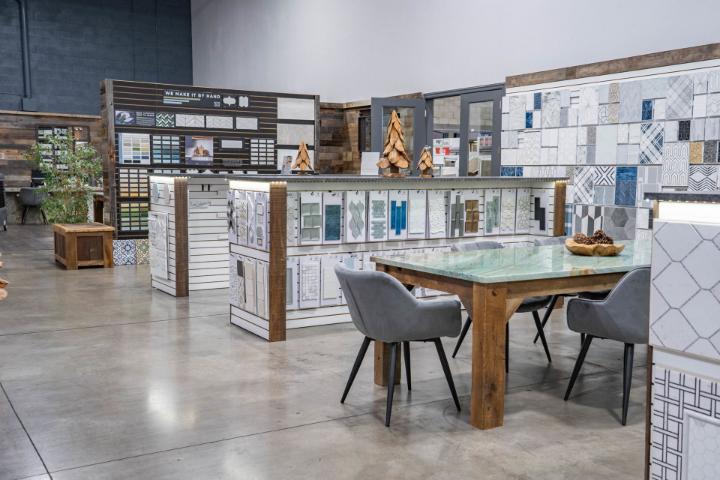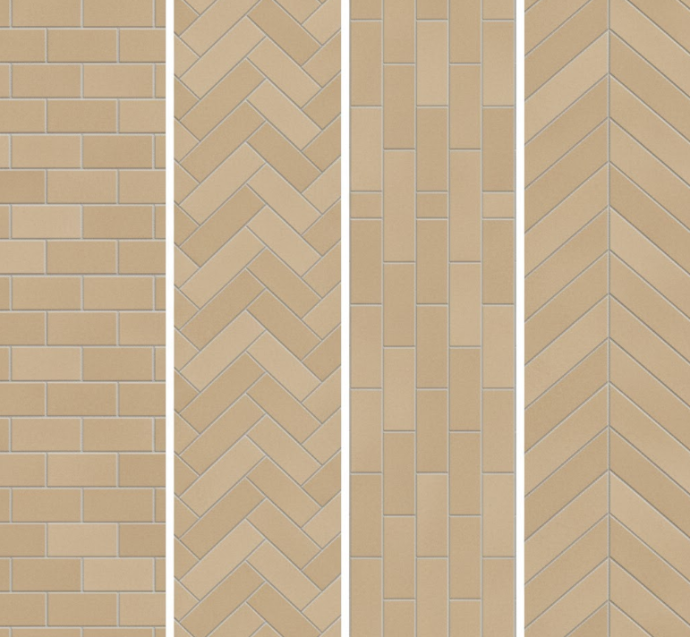Subway tile is a rectangular ceramic, glass, or stone tile traditionally measuring 3x6 inches with a 2:1 ratio, originally installed in New York City's subway system in 1904. This tile style can be installed in brick, herringbone, or vertical patterns. Subway tile remains popular because it's easy to clean, reflects light, resists stains, and adapts to any design style through grout color and installation pattern choices. The tile emerged from Victorian-era hygiene standards and now appears in materials including ceramic, glass, marble, stone, and porcelain for kitchens, bathrooms, and backsplashes.
Despite subway tile's widespread appeal, there's much more to discover about this beloved design element. At our tile and stone company, we've always recognized subway tile as versatile, classic, and suitable for virtually any space. However, what precisely qualifies as subway tile? What's the story behind its creation? Frankly, we weren't certain ourselves. After conducting thorough research, here are 10 surprising facts worth knowing.
1. Its Roots Trace Back to Underground Manhattan.
You've likely guessed it, the original subway tiles emerged underground in New York City's transit system. When the system launched in 1904, designers George C. Heins and Christopher Grand La Farge faced a challenging brief: create surfaces that maintained cleanliness while providing comfort and familiarity to residents experiencing underground transportation for the first time. Their answer, tiles featuring gently rounded edges and shiny surfaces ensured the stations remained hygienic, refined, and well-lit.
2. The Original Subway Tile Still Exists In A Closed Station.
Design enthusiasts and curious explorers wanting to view the original subway tile can arrange access to New York City's inaugural subway station: the now-closed City Hall stop. While the New York Transit Museum provides guided visits, some New Yorkers have cleverly remained on the 6 train for an unauthorized peek.
3. It Emerged From A Victorian Cleanliness Movement.
Subway tiles developed during the Victorian period's emphasis on sanitation. Their shiny, glazed surfaces offer stain resistance, simple maintenance, and light reflection. They rapidly gained recognition as functional and hygienic, becoming the preferred wall treatment in various settings from bathrooms and kitchens to meat shops. Today, these characteristics continue making them an ideal selection for contemporary bathroom remodeling and kitchen design projects.
4. The Traditional Size? Not Exactly Standardized.
What defines subway tile precisely? The answer isn't straightforward, particularly if you associate subway tile with one specific rectangular dimension. Though traditional subway tile measures three inches by six inches, this definition has evolved. Currently, tiles with a 2:1 length-to-width ratio typically fall under the subway tile category. You can shop tiles by size to find the perfect dimensions for your project.
5. Glass and Stone Versions Exist As Well.
If you assumed subway tile could be identified by its composition, reconsider. Technically, it's defined as a thin, low-fired, glazed ceramic tile. However, the Washington Post notes that the original versions in New York City's subway system were actually white glass. Today's "subway tile" appears in numerous materials, and understanding porcelain vs ceramic tiles can help you choose the right material for your space.
6. Prices Can Start Below $1.
The cost of subway tile spans a wide spectrum. Basic hardware store options can be found under $1 per tile (roughly $8 per square foot), whereas handcrafted, artisanal versions may exceed $60 per square foot. According to the US Ceramic Tiles Market Report, the variety in pricing reflects diverse consumer preferences. Browse our shop to compare options across different price points.
7. Don't Overlook The Grout.
Following the effort (and investment) involved in selecting tile, grout might seem secondary. Yet it's crucial: your grout selection can dramatically transform your subway tile's appearance and overall aesthetic. Learning how to grout tile properly ensures your installation looks professional. The Ceramic Tile Foundation offers comprehensive guidance on proper installation techniques.
8. Installation Patterns Are Limitless.
You're likely envisioning subway tile installed in the traditional horizontal "brick" layout. But have you considered vertical installation or perhaps herringbone or geometric L-shaped arrangements? When planning your design, explore different tile styles and patterns. For inspiration on small kitchen floors, creative pattern choices can maximize visual impact.
9. Floor Applications Aren't Recommended.
Where should you avoid using subway tile? Floors. Given subway tiles' relatively thin profile, they can't withstand heavy foot traffic and daily wear. If you're considering replacing bathroom tiles or planning a house renovation, consult planning guidelines for proper tile selection based on location and use.
10. It's Comparable to Owning Quality Denim.
"It's achieved classic status, similar to jeans paired with a T-shirt," says Deborah Osburn, founder of California's Clé Tile. Consider subway tile a timeless, functional design essential that complements nearly anything. "Even the most budget-friendly tile can make a design impact, styled formally or casually," Osburn explains.
Conclusion
Subway tile has earned its place as a design staple for good reason. From its humble beginnings in New York City's underground transit system to its current status as a go-to choice for modern interiors, this versatile material continues to prove its worth. Whether you're drawn to the affordability of basic ceramic options or the luxurious appeal of handcrafted glass versions, subway tile offers something for every style and budget. The key is understanding that this classic design element goes far beyond the standard 3x6 white tile, it's an adaptable canvas that can be customized through material choice, grout color, and installation pattern. Browse tiles by color or visit our local showroom to see samples in person. At Nova Tile and Stone, we believe that knowing the history and possibilities of subway tile empowers you to make design decisions that truly reflect your personal style while maintaining the timeless appeal that has made this tile a century-long favorite.
Frequently Asked Questions
What is the standard size for subway tile?
The traditional subway tile measures 3 inches by 6 inches, but the definition has expanded significantly. Today, any rectangular tile with a 2:1 ratio (twice as long as it is wide) generally qualifies as subway tile. You'll find subway tiles in various dimensions, from smaller 2x4 formats to larger 4x8 or even 6x12 sizes, all maintaining that classic elongated rectangular shape. Following NKBA planning guidelines can help you determine the best tile size, and you can learn more about us to see how we help clients select the perfect dimensions.
Can I use subway tile on my bathroom floor?
Subway tile is not recommended for floor applications. These tiles are relatively thin and weren't designed to handle the heavy foot traffic and wear that floors endure. They're best suited for walls, backsplashes, and shower surrounds where their durability and easy-clean surface truly shine. For flooring, browse tiles by type to find appropriate alternatives, or contact us for personalized recommendations.
What materials are available for subway tile besides ceramic?
While subway tile is technically defined as a glazed ceramic tile, modern versions come in diverse materials. You can find subway tiles made from glass, natural stone, marble, porcelain, and even metal. Each material offers distinct characteristics, glass provides luminosity and depth, stone delivers natural texture, and marble adds luxury. Explore our 2.5x8 matte porcelain subway tile for a durable modern option.
How does grout color affect the appearance of subway tile?
Grout plays a transformative role in subway tile design. White or matching grout creates a seamless, cohesive look that emphasizes the tile's clean lines. Dark or contrasting grout highlights the grid pattern and individual tiles, adding visual interest and a more graphic appearance. Gray grout offers a practical middle ground that hides dirt while maintaining a contemporary feel. Your grout selection can make the same tile look entirely different, so consider your desired aesthetic carefully.
What are some creative ways to install subway tile beyond the standard brick pattern?
Subway tile offers remarkable pattern flexibility. Beyond the classic horizontal brick layout, try vertical stacking for a modern, elongated look that draws the eye upward. Herringbone patterns create dynamic visual movement and sophistication. Geometric arrangements like basketweave or L-shaped patterns add architectural interest. You can even combine different sizes or orient tiles diagonally for unique effects. Check out our products we carry including decorative options like our 3x3 terrazzo matte finish porcelain mosaic tile for pattern accents.


